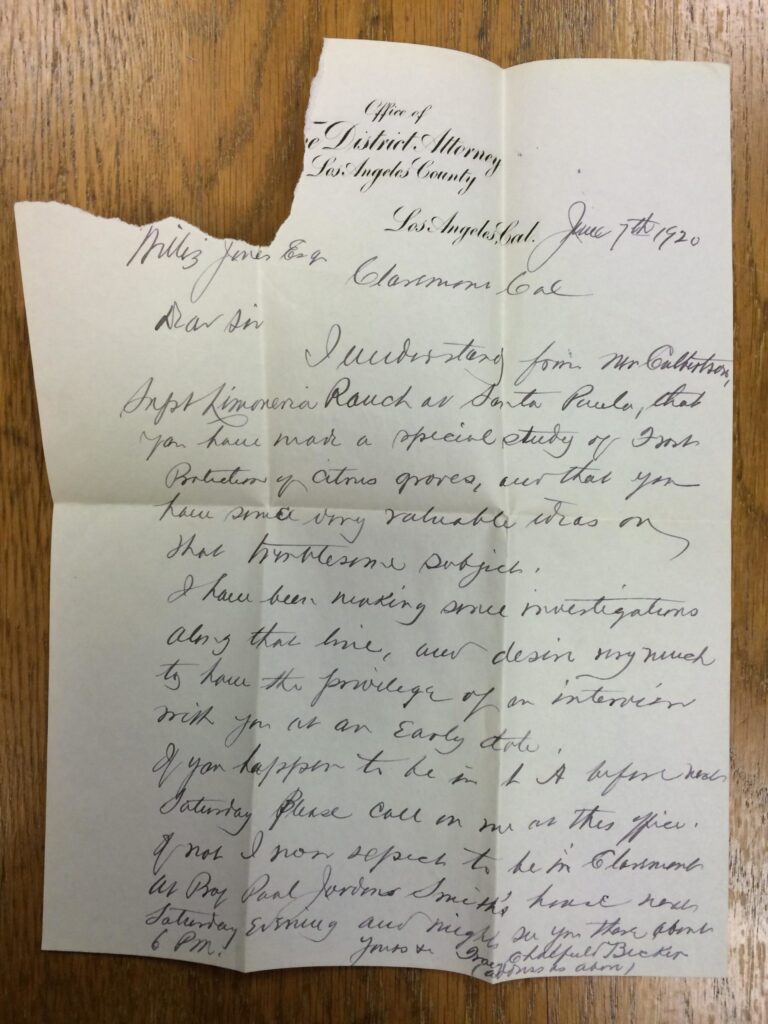Hi folks! Still scanning the Jones field notes with little new to report, so I’m going to take a bit of a detour and talk about book gutters.
Because, sure.
Back when Jones was creating these notes, his writing would occasionally drift achingly close to the bound edge of the book page, or its gutter. Which was all well and good for Jones in 1915, back when he could open and close his notes willy-nilly without a care in the world about damaging them. But a hundred-plus years of aging have rendered the paper and binding brittle, and thus difficult to fully open. And so a number or letter carelessly left at the precipice of the gutter can easily be obscured from the otherwise eagle-like gaze of the book scanner.

Which, fine. Given enough time, effort, and paperclips (don’t ask), a book can eventually be propped up and properly scanned.
But what if?
What if Jones became too careless, if he wrote too greedily toward the guttery abyss without moving on to the next line? And what if that particular book became too fragile to fully open and recover the wayward symbol, thwarting even our greatest library and archival technologies of the present (including paperclips)?
What if that letter or number was really important? Perhaps some researcher of the future will one day write her entire dissertation on Jones and his many field notes, and she will puzzle over this slightly obscured letter. Assuming it is a letter. Maybe it’s a number? She can’t be sure. She tries to enlarge the image, but to no avail, the screen mocking her with pixelated mystery. Perhaps she will contact Special Collections to see the field notes in person, as any tenacious researcher would, only to learn that the original was lost in the Great Silverfish Infestation of 2095 or whatever. For all perishes eventually, even field notes.
I forgot where I was going with this. Something about gutters? At any rate, that’s about all the time I have this week. See you next time, and stay out of the gutter!

 This week I spent a lot of time reading about metadata practices and taking notes so that I can prepare myself for creating metadata for the digital surrogates that I have created these past six weeks. Dublin Core and Non-Dublin Core elements as well as a data dictionary created by the digital library staff have been my best friends this week. Before I start reading through my digital surrogates in order to gather keywords and create descriptions, I have been gathering property data such as format and size information and creating Microsoft word documents in order to organize the data. Next week I plan on summarizing the context of the digital surrogates and reviewing Library of Congress Name Authorities. My “biggest” challenge would be converting our tif files into the pdfs that they accompany. Our tif files are of the oversized documents that we could not fit onto a scanner for their digital production (I talk more about them in Blog Entry 003; Photography and Photoshop). One part about metadata that I find interesting is the organized attention to detail; the most vital part about a digital surrogate is its metadata because the metadata is the key to the discovery and utilization of the digital surrogate. Although the process may seem meticulous, I appreciate its purpose.
This week I spent a lot of time reading about metadata practices and taking notes so that I can prepare myself for creating metadata for the digital surrogates that I have created these past six weeks. Dublin Core and Non-Dublin Core elements as well as a data dictionary created by the digital library staff have been my best friends this week. Before I start reading through my digital surrogates in order to gather keywords and create descriptions, I have been gathering property data such as format and size information and creating Microsoft word documents in order to organize the data. Next week I plan on summarizing the context of the digital surrogates and reviewing Library of Congress Name Authorities. My “biggest” challenge would be converting our tif files into the pdfs that they accompany. Our tif files are of the oversized documents that we could not fit onto a scanner for their digital production (I talk more about them in Blog Entry 003; Photography and Photoshop). One part about metadata that I find interesting is the organized attention to detail; the most vital part about a digital surrogate is its metadata because the metadata is the key to the discovery and utilization of the digital surrogate. Although the process may seem meticulous, I appreciate its purpose.



















